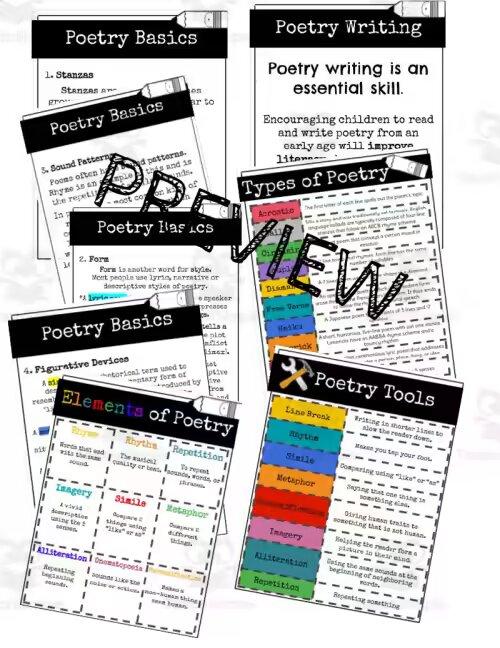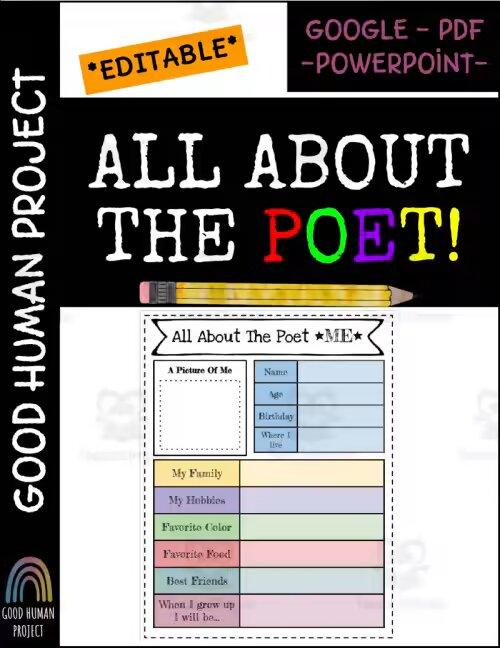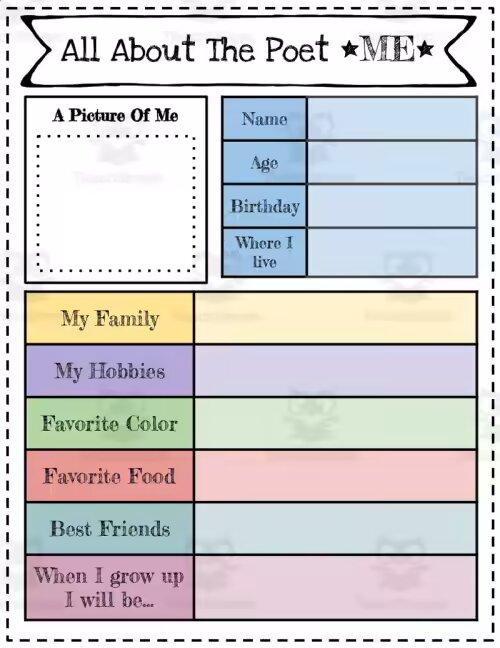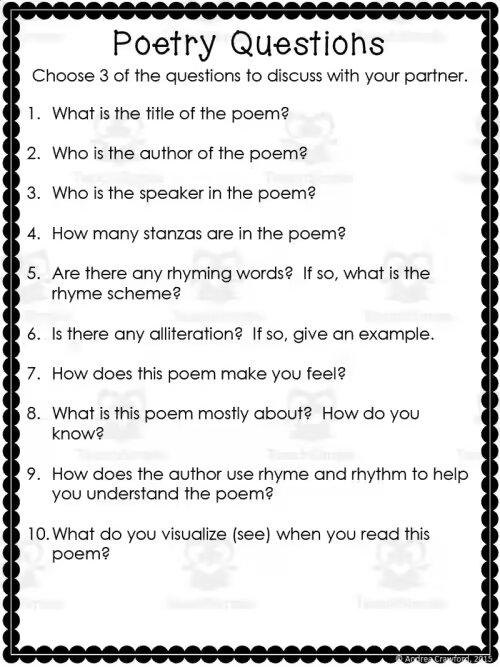Introducing Poetry to Your Classroom with Anchor Charts
Teaching poetry can be daunting if you aren’t entirely comfortable reading it aloud or need to teach it to children who may take things more literally. But instead of shying away or rushing through your poetry lessons, you could consider using an anchor chart to make the process easier for you and the class.
An anchor chart is a visual tool that can help you and your students understand what you’re trying to teach. They’re also valuable for keeping track of your lesson plan, especially if you’re new to teaching or this is a new unit. Finally, an anchor chart is a great way to keep everything organized while making the lesson interactive.
Some teachers create their own anchor charts. But they can also be purchased pre-made. Designing an anchor chart can even become a fun classroom activity, where you and your students participate in bringing it to life.
Poetry can be complex to teach. While it uses imagery, rhythm, and rhyme to create a more vivid picture in the reader’s mind, it can also be abstract or figurative. It comes in many forms – like sonnets, haikus, limericks, and many more.
An anchor chart introducing poetry to your class will give students valuable vocabulary and tools for understanding, analyzing, and writing poetry. For example, you might use an anchor chart to introduce the concept of simile.
You could use a picture or image of a hand with a pointer finger extended and write “like” next to it. Similes and metaphors are often used in poetry and sayings, so having this vocabulary available to students will make them better critical thinkers and communicators in all aspects of their.
Table of Contents
- Elements of a Good Poetry Anchor Chart
- Different ways of presenting a poetry anchor chart
- Resources from Teach Simple
- Other Resources
- Summing up
Elements of a Good Poetry Anchor Chart
So, what should you have on a poetry anchor chart? Because it is such a broad topic, it’s impossible to fit everything there is to know about poetry onto one chart. The complexity and depth of the concepts will vary according to the age group you are teaching. Some charts will relate to certain aspects of poetry, some are more generalized, and some can even connect to specific poems.
Identify the Basic Elements
The basic elements are essential for understanding poetry. Of course, there are many different types of poems, but the basic elements apply to all. They include:
Rhyme
The repetition of similar-sounding words at the ends of different lines in a poem. Commonly, rhyme is used at the end of each stanza, but it can also be used to tie together multiple stanzas. Rhyme schemes vary by language and poet. Rhyme is one of the most basic ways to help a poem stand out, but it also has the potential to be overdone, so it’s essential to use it carefully.
Meter
The recurring pattern of stressed and unstressed syllables in a poem. Meter is most often found in poetry written in a particular form, like sonnets or haikus, but it can also be used in free verse
Scheme
The rhyming pattern in a poem is called a scheme. Rhymes might occur on every line of a stanza, in alternating lines, or couplets, for example. We indicate the rhyme scheme using a set of letters.
Stanza
The part of a poem in which lines are arranged in a similar pattern, meter, or theme. A break or blank line is used to separate stanzas from one another. However, it is not always the case.
You may also want to include the terms “title” and “poet.“
You Can Take It Further and Include a “Types of Poetry” Anchor Chart.
There are many different types of poetry. However, regardless of the specific kind of poetry we are considering, we can almost certainly categorize it as either narrative, descriptive, or lyrical.
Lyric poetry focuses on the poet’s inner world, expressing deep thoughts and feelings. A narrative poem, on the other hand, tells a story. In descriptive poetry, the poet uses a lot of imagery to describe the world around them. While descriptive poetry has a single poetic voice and intense emotion, it differs from lyric poetry in that it focuses on the external elements of the world rather than the poet’s inner world.
Within these three structures, you will find subtypes that have specific formats. These include sonnets, haiku, limericks, odes, ballads, acrostics, and cinquains.
Poetic Devices
These devices are found in many other writing genres, but it’s essential to understand them in the context of poetry. There are far too many to name, but they include figures of speech, like metaphors, similes, and allusion. In addition, sound devices, like alliteration, assonance and consonance, help with the rhythm and meter of the poem.
Determine how each part of the poem contributes to the whole
Once your students understand the poem’s features in isolation, you can explore how each one contributes to the overarching story being told. This way, your students better understand why these parts are present and how they impact the overall message.
Different ways of presenting a poetry anchor chart
Regardless of how you format an anchor chart, it’s an excellent teaching and learning tool. So, whether you’re preparing to teach your unit or lessons on poetry, there are many ways to do it.
Basic Poetry Elements
This anchor chart is perfect for younger students in first or second grade. It lists the basic components that can make up a poem with friendly visuals as examples.
Types of poems
This poetry unit will introduce your students to eleven forms and eight elements of poetry. The finished product will be an entire collection of original poems.
or
Create a simple display for students to refer to.
Create a Poet-Tree
This is a great visual for the lower elementary grades.
Poetry Guides
You can have a chart for individual types of poetry with guidelines on creating one.
Poetry Frameworks
Compare and contrast types of poetry.
Graphic Organizers
Display graphic organizers and work with the students to analyze a poem and its elements.
Parts of a Poem
If you are looking for some excellent poetry anchor charts, look no further.
Resources from Teach Simple
Poetry Writing | Anchor Charts & Visuals



This resource is full of anchor charts and visuals that would make a great companion for your poetry unit. These anchor charts and visuals can be printed, displayed digitally or even distributed to student devices digitally.
Introduction to Poetry | Monster Narrative Poetry Challenge



This activity is a fun way to introduce and reinforce teachings about narrative poetry.
All About the Poet



Students can use this resource to write an all about me, poet style. This can be accessed through PDF, Google slides and PowerPoint.
Poetry Analysis Activities



These activities can be applied to any poem, making them perfect for your poetry unit.
Other Resources
How to Teach Poetry (Even if You Hate it) – Notes from the Portable
Try these simple ways to learn how to teach poetry.
Fun Poetry Activities
Poetry activities for reading poetry, writing poems, and incorporating poetry into your other subjects and lesson plans.
10 Tips to Effectively Teach Poetry
Great for upper elementary students.
Choice Board Packet
These choice boards will spice things up and help you know if the students are grasping a particular concept.
Blackout Poetry Lesson Plan
Here’s a step-by-step lesson plan on how to teach blackout poetry.
A Poem in Your Pocket
Use this fantastic free ‘Poem in Your Pocket’ activity to get kids reading and sharing poetry.
Poetry Analysis Collaborative Poster
Engage your students in a collaborative poetry project that will get them thinking. This collaborative poetry project is the perfect way to have students analyze poems.
Summing up
Poetry is an art form that uses language inventively and creatively. Reading or writing poetry requires skill and technique, as well as an ability to express ideas and feelings in new ways. Just as there are many different types of art, there are many kinds of poetry.
Anchor charts are the perfect tool to solidify and consolidate your student’s understanding of all the intricacies that go into the art of poetry. Poetry is not just about rhyming words and adding some imagery; it is also about the structure of the poem and the way it is presented.

By Nicola K
Nicola lives in Johannesburg, South Africa. Before starting her career as a writer, she specialized in gifted education and now writes about education and supporting parents and teachers of children who are “different” according to commonly-held views.
